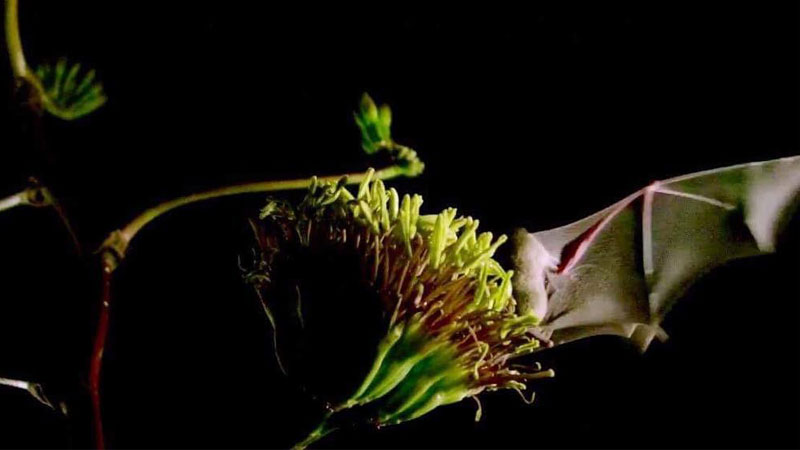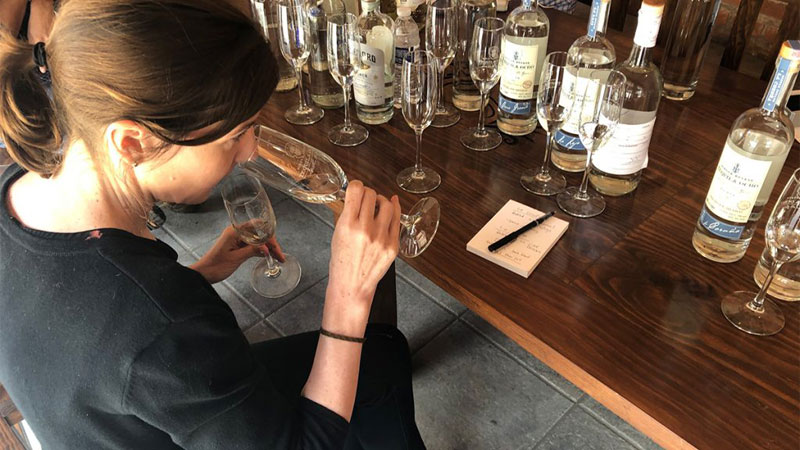From absinthe-hoarding absintheurs to hype-chasing bourbon taters, great drinks inspire great passions just about everywhere. But beyond aficionados, collectors, and fans, the world of tequila and other agave-based spirits is on another level entirely.
Concerned about tequila’s impact on the natural world, like the long-nosed bats that would normally pollinate agave plants? The bat-friendly tequila project was set up with that in mind. Prefer tequila without additives? Scan the list at Taste Tequila, which has its own additive-free certification program, or consult the personal list of additive-free tequilas from Long Island Lou, one of many tequila bloggers who are working to share information and increase transparency.
Want to support sustainability and traditional production methods? Donate to the Tequila Interchange Project. Interested in assisting with local water security or even directly supporting traditional mezcaleros by purchasing their agave spirits in advance? Check out the great work being done by Sacred Agave, a U.S.-based, 501(c)(3) not-for-profit corporation.
Don’t miss a drop!
Get the latest in beer, wine, and cocktail culture sent straight to your inbox.
The number of charitable organizations, social-welfare projects, and transparency activities associated with tequila and mezcal is unlike anything else in the world of spirits: There is no bat-friendly bourbon; no nonprofit replanting project for the barley in Ireland’s single pot still whiskey. So, what is it about agave that inspires so much activism?
For Lou Bank, founder of Sacred Agave and host of the “Agave Road Trip” podcast, the popularity of agave drinks has made an impossible-to-ignore impact on the environment — especially when it comes to tequila’s less famous cousin mezcal. The amount of mezcal, mostly produced from espadín maguey, Agave angustifolia, might be small in relation to the vast oceans of tequila that are made from blue Weber agave, Agave tequilana: Bank estimates mezcal’s annual volume at around 1.5 percent of that of tequila. But growing interest in mezcal is completely changing the environment in its homeland of Oaxaca, Mexico.
“It’s still tiny, tiny, tiny, tiny, tiny, but it’s booming,” Bank says. “And as it booms, you’re seeing the landscape of Oaxaca, and the landscape of wild lands, wild plants, wild animals being displaced by espadín farms.”
Bartenders, importers, and other industry types have been coming to the region for many years, he says, and the changes are obvious. “People fell in love with Oaxaca, and they’re seeing Oaxaca disappear.”

A Different Landscape
If change is visible in Oaxaca, with its relatively small volumes of mezcal, tequila has had an even bigger impact on its home region of Jalisco.
“Tequila has been growing so rapidly,” Bank says. “You’ve got that same problem times a thousand in Jalisco, where wild lands, they’re just gone.”
Bank’s poetic estimate is supported by sales figures, especially those of luxury spirits. In the U.S., total imports of tequila have grown by 180 percent since 2002, according to the Distilled Spirits Council, while the “high end” and “super premium” tequila categories jumped 531 percent and 1,042 percent, respectively. “Americans can not get enough of Mexico’s native spirit,” the council notes.
The spectacular growth in valuable tequila exports has created a lot more than just a sudden glut of celebrity tequila brands. Once gathered from naturally growing plants, tequila’s blue Weber agave is now farmed in vast, monocultural fields. While traditionally taking seven years or more to reach maturity, agave plants are now being harvested much earlier, pushed by sky-high prices. In turn, that has changed the way tequila tastes, according to Grover Sanschagrin, who founded Taste Tequila and launched its Tequila Matchmaker app with his wife, Scarlet, in 2012.
“The difference between a 5- or 6-year-old agave and a 7- or 8-year-old agave in the final product is dramatic,” he says. “And I don’t think people really realized that until recently, because right now, 5- and 6-year-old agaves are all you can get on the open market. And so the quality, the yield, it’s all down, because of younger agaves.”
As a result, many tequila producers are leaning on additives like glycerin, which increases creamy mouthfeel, as well as sweeteners and flavorings like oak extracts, all of which are legally allowed by production regulations. That has in turn led to more transparency projects, like Tequila Matchmaker’s additive-free certification program, which counts such members as Fortaleza, Fuenteseca, Tequila Ocho, and Patrón.
“Additives are rampant,” Sanschagrin says. “We want people to know that tequila doesn’t need additives, and for them to try products that don’t contain additives, so they can judge that for themselves. The biggest issue we have is that traditional tequila aroma and flavor profiles are endangered, because additive use is so widespread that people are starting to think that tequila should taste like a vanilla cake batter, or cake frosting. That’s not what tequila tastes like.”

What Gets Lost
In addition to more additives, many large distilleries now employ diffusers, a huge piece of industrial equipment that can process agave plants raw, rather than after roasting them, as in the traditional production method. To extract sugars from uncooked agave, diffusers apply massive volumes of hot water and doses of sulfuric acid.
Naturally, diffuser use is a major issue for many agave activists, like the blogger Michael Fetterly, a resident of Sinaloa, Mexico, who gives diffusers a four-letter shoutout in his Twitter bio.
“Introducing acid-catalyst hydrolysis, that just screams that you’re speeding up the process,” he says. “That can’t be good. And certain things have to get lost. And then when you try the diffuser tequila, you know something’s wrong. You can just tell.”
It’s hardly the case that “anything goes” in tequila making — its production is strictly regulated. However, those regulations legally allow additives, diffusers, monocultural agave fields, and early harvests.
For Fetterly, being outside the industry has an upside.
“I’m completely independent,” he says. “I’ve traveled. I’ve visited distilleries. I know some producers, sure. But I’m not linked to anyone. I’m not employed by anyone. And that’s what I like, because I mean, I can almost say anything without feeling any kind of retribution.”
While agave activism might have multiple angles, Sanschagrin says that there’s one thing they have in common.
“There’s a danger in the mass production of the spirit,” he says. “And I think what you’re seeing here in terms of the activists, if you trace it down, everybody’s really defending the small producer.”
That defense comes in many forms. SACRED Agave is working on a new project, Bank says, building out three new nurseries and greenhouses in Jalisco to grow at-risk varieties of agave and other native plants, with the goal of giving those seedlings away to the families that are producing heritage agave spirits. When he describes it, it sounds like something that goes way beyond Jalisco — far beyond Mexico’s borders, even beyond the choices of consumers in North America.
“I think we’re all sensing, even if we can’t verbalize it, that we need to do things differently,” he says. “Well, not all of us, but a lot of us are facing that. We need to do things differently.”
This story is a part of VP Pro, our free content platform and newsletter for the drinks industry, covering wine, beer, and liquor — and beyond. Sign up for VP Pro now!


